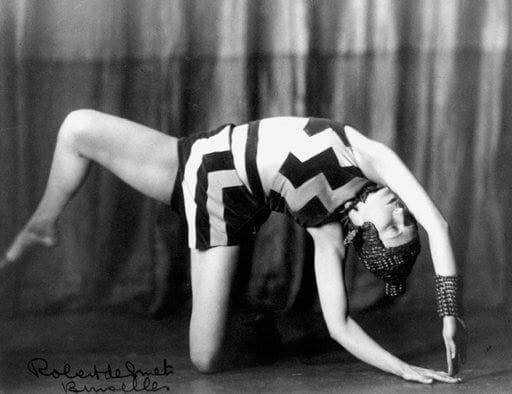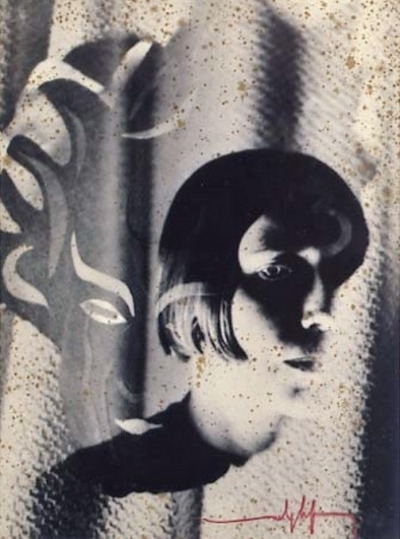#akarova
Text


MARCEL-LOUIS BAUGNIET & AKAROVA
Les Lettres Dansantes (Carnaval par Robert Shumann)
1923
#MARCEL-LOUIS BAUGNIET )#Les Lettres Dansantes (Carnaval par Robert Shumann)#1923#akarova#costume design
77 notes
·
View notes
Text

MARCEL-LOUIS BAUGNIET (1896-1995)
Folding screen for the dancer Akarova (Marguerite Acarin), four panels, fabric, wooden frames, 1923
Bonhams
31 notes
·
View notes
Text


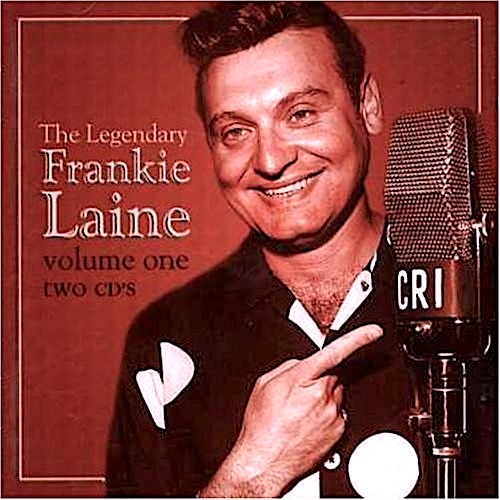
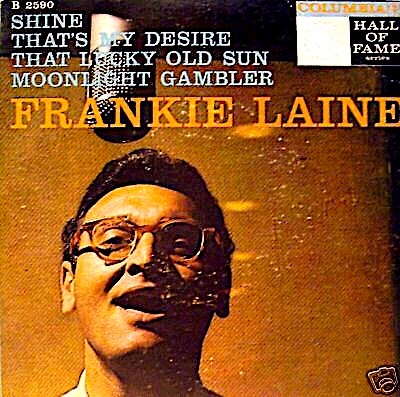


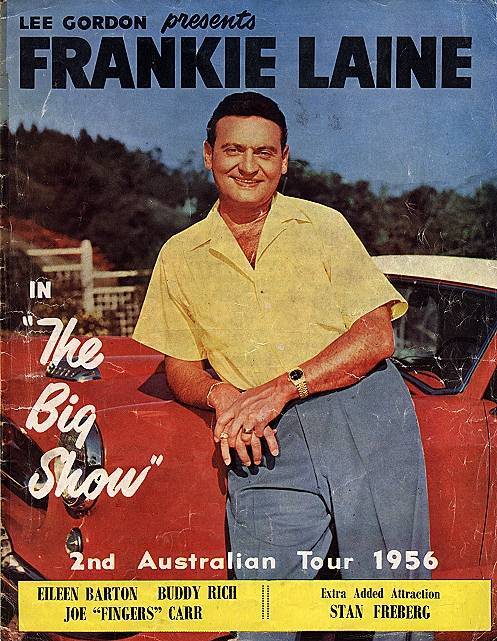




HAPPY BIRTHDAY to The Fifteenth Amendment (1870), Akarova, John Astin, Warren Beatty, Joey Castillo, Tracy Chapman, Eric Clapton, Daisy Coleman, Robbie Coltrane, Miles Davis’s 1970 BITCHES BREW LP, Celine Dion, Graeme Edge, Francisco Goya, MC Hammer, the Jeopardy game show (1964), Norah Jones, Charles Lightroller, Lene Lovich, singer-songwriter Don Malliband, Hayashibara Megumi, Kacey Musgraves’s 2018 GOLDEN HOUR album, Walter Piston’s 1951 4th Symphony, the 1946 Arlen-Mercer musical “St. Louis Woman” w/Pearl Bailey & the Nicholas Brothers, Ximo Tebar, Jay Traynor (Jay & The Americans)—good to have met you, Vincent van Gogh, Randy VanWarmer, (the original) Sonny Boy Williamson, and the great American singer-songwriter Frankie Laine. Born of Italian parents, Laine was influenced by opera and blues, particularly Bessie Smith and Louis Armstrong—who Laine called “my idol.” Laine’s early career had many setbacks and let-downs and, after threatening to quit music at least six times. Then in 1946 he was “discovered” by Hoagy Carmichael, which led to Laine’s breakout hit “That’s My Desire” (now a jazz standard). Concurrently he discovered a niche singing in films.
He signed to Mercury Records, then switched to Columbia, and the hits (and royalty checks) rolled in. He was heralded as an innovator for his unique vocal technique and masculine tone. Like Bessie Smith, Laine’s voice projected and could fill a hall without a microphone. One critic described Laine as “a big lad with steel tonsils who belted out torch blues while stomping his size twelve feet...he owed nothing to Crosby or Sinatra...” In contrast to the smooth balladeer of the era, Laine would bend notes and sing around the chordal context of a note rather than to sing the note straight, and he stressed each rhythmic downbeat. Like Johnnie Ray, Laine was first cast as an R&B/jazz singer and is now regarded as a forerunner of rock & roll, influencing Elvis Presley and Ray Charles (who admitted to mimicking Laine), and Laine was later name-checked by The Beatles. Laine, however, was able to branch out into folk, gospel, pop and, famously, the Cowboy/Western theme songs imbedded in pop culture: “Gunfight at the OK Corral,” “Rawhide,” “3:10 to Yuma,” and many more. His Campbell Soup “Manhandler” commercial hasn’t been on the air for decades, but people are still singing it. In his long career he had more than 70 charted records, 21 gold records, and global sales of over 100 million records. He was still performing at age 93 when he passed away in 2007.
Laine’s 1949 cover of the folk-spiritual “That Lucky Old Sun” became his 5th gold record, perhaps because a lot of working people could relate to it. The lyrics of the song contrast the toil and hardship of the subject’s life with the obliviousness of the natural world. Yet he sees a silver lining and God's deliverance behind it all. Inspired by “Ol’ Man River,” “Lucky Old Sun” was written in 1949 by big band musician Beasley Smith and prolific Tin Pan Alley lyricist Haven Gillespie—who also wrote "You Go To My Head" (another favorite of mine). “Lucky Old Sun” gained presence with me after hearing Brian Wilson's 2007 concept album based on this song. In 2020 I added it to my set list for when I perform in assisted living homes. My arrangement blends the definitive Laine recording with the soul of Louis Armstrong's cover (in 1949 both artists released "competing versions"). Meanwhile, HB Frankie, and thank you for giving us years of amazing songs.
#luckyoldsun #GreatAmericanSongbook #OlManRiver #BeasleySmith #HavenGillespie #BrianWilson #LouisArmstrong #FrankieLaine #gospel #work #river #johnnyjblair #singeratlarge
#johnny j blair#singer songwriter#music#singer at large#pop rock#san francisco#Frankie Laine#birthday#Louis Armstrong#Brian Wilson#Sun#Lucky#Bandcamp
1 note
·
View note
Text

Akarova - Choreography & costume design for Allegro Barbaro (1929)
26 notes
·
View notes
Photo

Akarova in Mazurka (Chopin), 1923
Dancer Marguerite Acarin, known as Akarova in Mazurka (Chopin) in 1923. Costume design by Marcel-Louis Baugniet and Akarova herself. Unknown photographer. | src CIVA Brussels Fonds Akarova
#akarova#mazurka#chopin#1920s#full length portrait#dance pose#dancer#marguerite akarova#marcel-louis baugniet#costume design#dance costume
131 notes
·
View notes
Photo
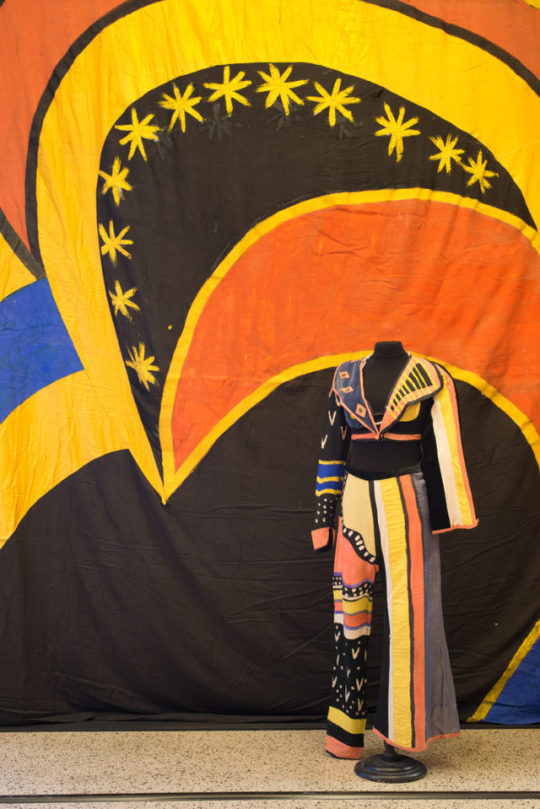
"Voici des Fleurs" at La Loge
#Akarova#Ana Torfs#Anne Hardy#Belgium#Brussels#Caroline Mesquita#Exhibitions#Group Show#Hanne Lippard#Institution#Jurgen Persijn#La Loge#Leen Voet#Lili Dujourie#Pauline Curnier Jardin
55 notes
·
View notes
Photo
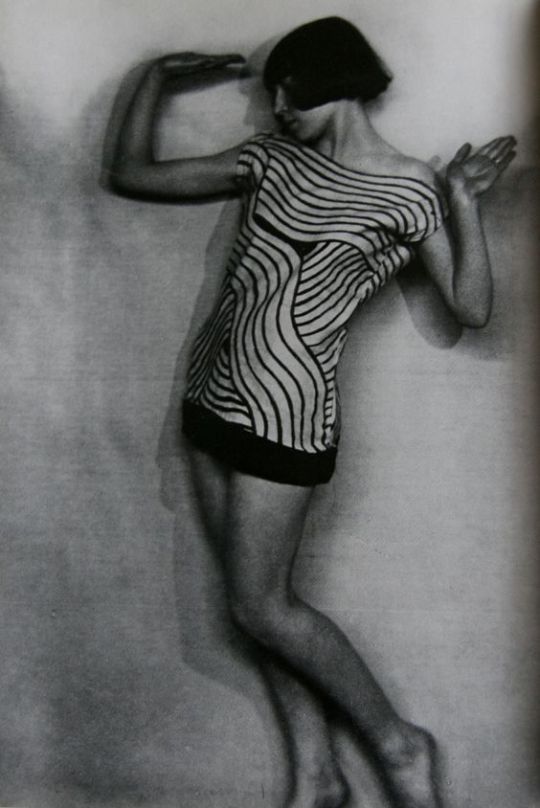
La Danseuse Marguerite Acarin, dite Akarova dans Mazurka ( Chopin) en 1923 Costume crée par Marcel-Louis Baugniet et réalisé par Akarova
14 notes
·
View notes
Photo
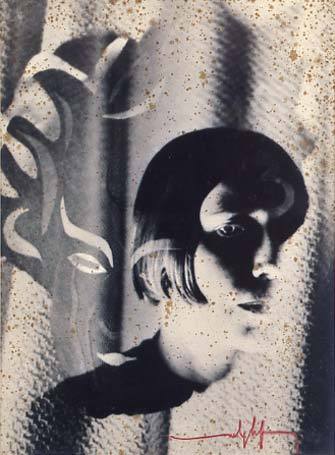
Marcel G. Lefrancq - Portrait of Akarova with overprint of a mask
108 notes
·
View notes
Photo
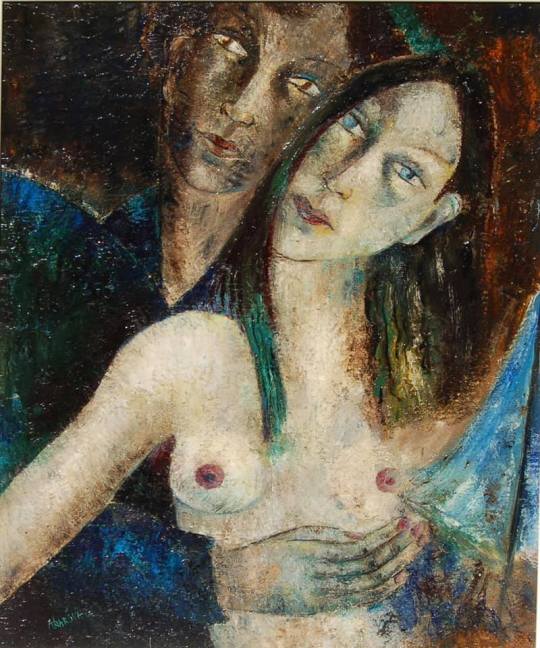
Marguerite Acarin (Akarova) (Belgian, 1904-1999)
20 notes
·
View notes
Text

MARCEL-LOUIS BAUGNIET & AKAROVA
Gymnopédie N°1 (Erik Satie)
Circa 1925
Costume created and created in 1932 by Akarova starting from a painted scene in 1925 by Marcel-Louis Baugniet
The dance was performed between 1932-1948
127 notes
·
View notes
Photo
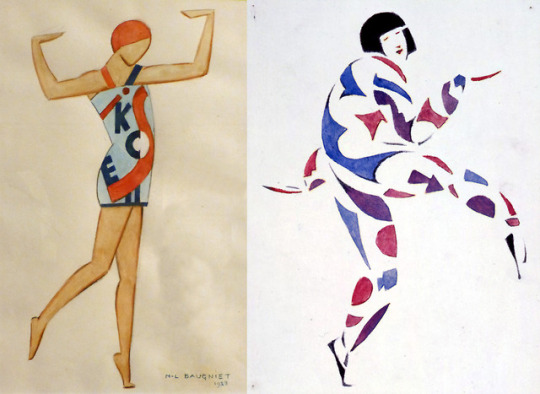
costume design for Akarova by Marcel Baugniet, 1923. Right Akarova dansant by Marcel Baugniet, 1924
26 notes
·
View notes
Photo



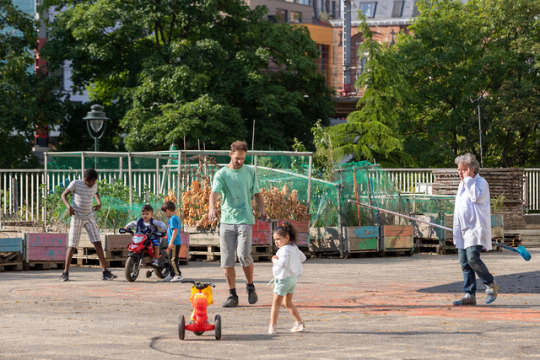
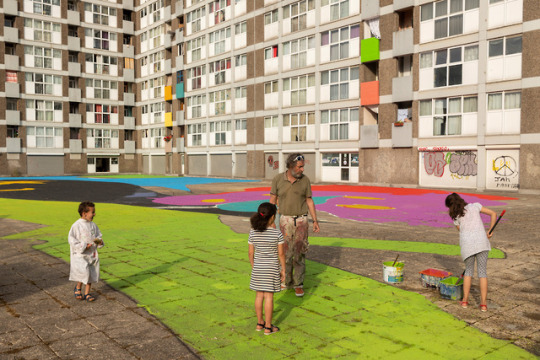

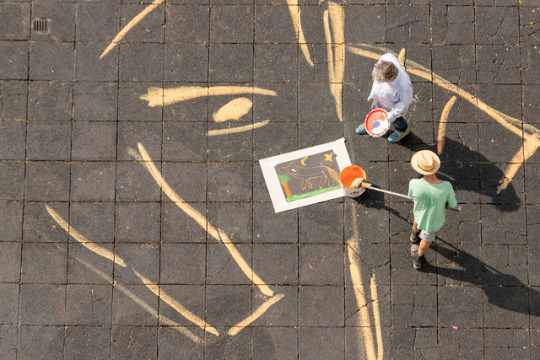
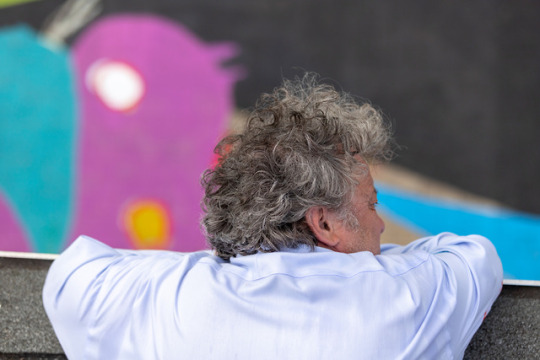
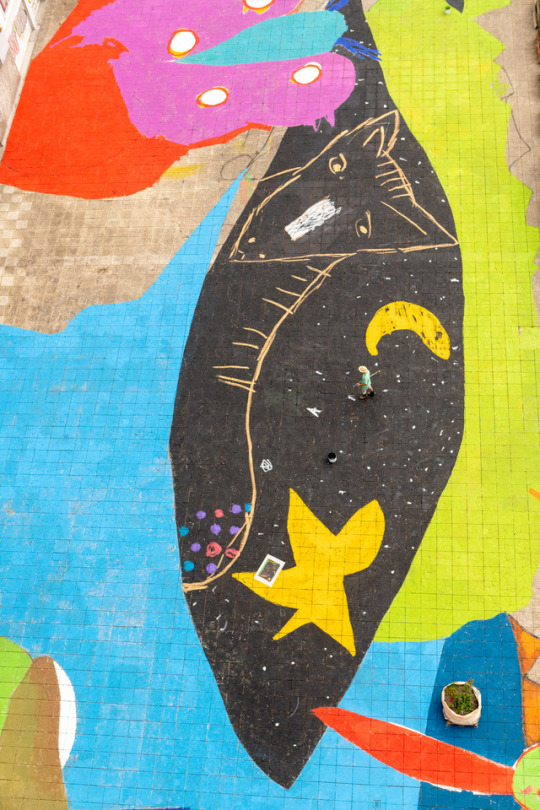
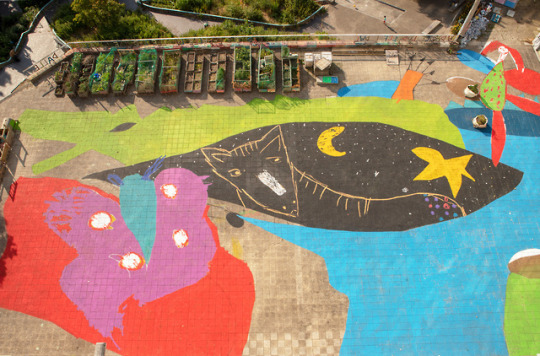
NL/
Van 22 tot 24 juni 2019 schilderden Vincent Glowinski een Bob Van Tricht een fresco op het plein naast de sociale woonblok Brigittines. Voor de schilderwerken van start gingen op zaterdag 22 juni was het plein volledig vrij- en schoongemaakt. Voor dit kunstwerk bedachten Vincent Glowinski en Bob Van Tricht een compositie op basis van tekeningen die het resultaat waren van een workshop georganiseerd door les Ateliers Populaires ASBL, in samenwerking met rusthuis Sint-Monika en Le 8 ème jour ASBL.
Toen de werf opgestart werd op 22 juni, organiseerde Recyclart (met de steun van vzw BRAVVO) een wijkfeest in de Akarovatuin, met een barbecue en een gratis concert, om zo afscheid te nemen van de bewoners, voor hun vertrek uit de wijk. Op die manier ontstond er een positieve buzz rondom het werk waardoor de kinderen uit de buurt met veel plezier deelnamen aan de realisatie door een bepaalde zone in te kleuren. Met de hulp van verschillende bewoners werkten de kunstenaars het hele weekend door en bij het vallen van de avond, op maandag 24 juni, was het werk af.
Tegelijkertijd voegde Vincent Glowinski een grafisch element (een zwarte spleet) toe aan de muurschildering van een gigantische vlinderpop op de noordwestelijke gevel van het gebouw, als verwijzing naar de schildering op het plein (met als centraal motief een groot zwart oog).
FR/
Du 22 au 24 juin 2019, Vincent Glowinski et Bob Van Tricht ont réalisé une fresque colorée sur la dalle des logements sociaux Brigittines. Le sol de la dalle a été dégagé et nettoyé en profondeur en amont du chantier de peinture qui a commencé le samedi 22 juin.
Pour cette fresque, Vincent Glowinski et Bob Van Tricht ont imaginé une composition sur base de plusieurs dessins issus des ateliers organisés avec les Ateliers Populaires ASBL, avec la Maison de retraite Ste Monique et avec Le 8èmejour ASBL.
Le 22 juin, jour de lancement du chantier, Recyclart organisait une fête de quartier dans le jardin Akarova, avec un barbecue et un concert gratuit, pour marquer la fin de leur présence dans le quartier et dire au revoir aux habitant•e•s. L’événement, organisé avec le soutien de l’ASBL BRAVVO, a permis de créer une émulation autour du chantier et d’inclure les enfants du quartier dans le processus de réalisation de la fresque en leur confiant notamment une zone à mettre en couleur.
Le chantier s’est poursuivi tout le week-end, avec l’aide de plusieurs habitant•e•s intéressé•e•s, et s’est clôturé le lundi 24 juin à la tombée du jour.
En parallèle, Vincent Glowinski a également ajouté un élément graphique (une fente noire) sur la fresque de chrysalide géante qui orne actuellement le pignon nord-ouest du bâtiment de logements sociaux afin de créer un lien avec le dessin de la dalle (dont le motif central est un grand œil noir).
0 notes
Photo
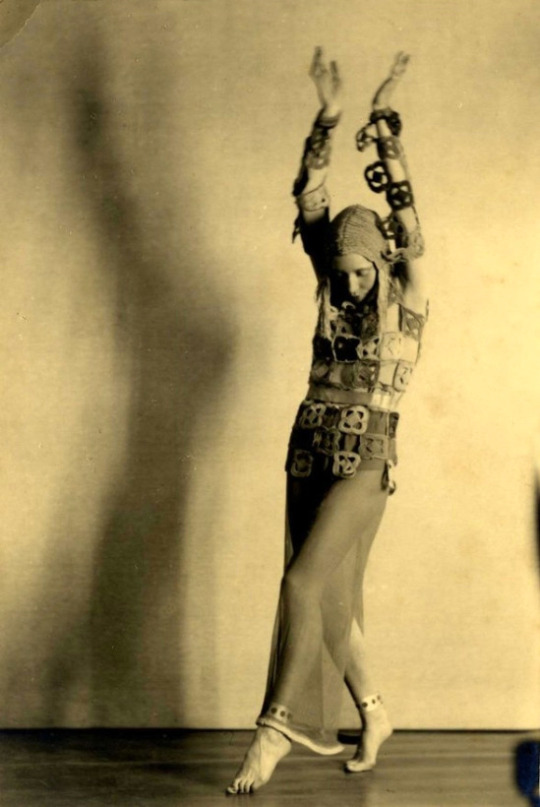
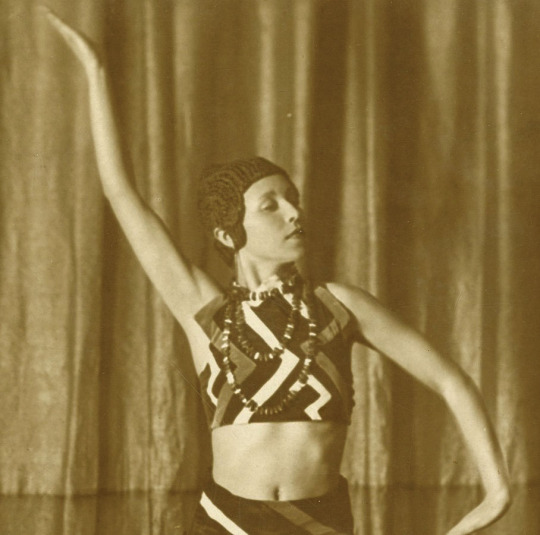
Robert de Smet :: Marguerite Acarin, known as Akarova in «Sicilienne», 1932, in costume of her own design (1924). © CIVA Brussels | src Bruzz.de.
Marguerite Acarin, aka Akarova in »Allegro Barbaro«, 1928-1929 | src and © CIVA Brussels
view on wordPress
#akarova#marguerite acarin#sicilienne#allegro barbaro#robert de smet#danseuse#hauntedbystorytelling#belgian dancer#dance pose#danzatrice#costume design#arms up#1920s#1930s
125 notes
·
View notes
Link
Artists: Akarova, Lili Dujourie, Anne Hardy, Pauline Curnier Jardin, Hanne Lippard, Caroline Mesquita, Jurgen Persijn & Ana Torfs, Leen Voet
Venue: La Loge, Brussels
Exhibition Title: Voici des fleurs
Date: April 19 – June 30, 2018
Click here to view slideshow
Full gallery of images, press release and link available after the jump.
Images:
Images courtesy of La Loge, Brussels
Press Release:
Voici des fleurs is a group exhibition imbued with the artistic legacy of Akarova (born Marguerite Acarin, 1904-1999), a celebrated Bruxelloise of the interwar years who devoted her life entirely to music, dance, choreography, painting and sculpture. La Loge invites contemporary artists Lili Dujourie, Anne Hardy, Pauline Curnier Jardin, Hanne Lippard, Caroline Mesquita, Jurgen Persijn & Ana Torfs, and Leen Voet to exhibit alongside Akarova’s work and to freely relate to her ideas and production dynamics.
There are, of course, innumerable ways to engage with the art and legacy of the artist, but La Loge’s ambition or mission is not to adopt a historicist, documentary, or archival response. Instead, Voici des fleurs has been developed with and by contemporary artists as an attempt to reassess the potential of Akarova’s archive, not only as a subject of research, but above all as an invitation to indulge in its repository of living materials; the vestiges of an animated artistic practice.
Voici des fleurs is not concerned with ‘re-evaluating’ or lending legitimacy to Akarova’s work. Its motivation is rather to expose and explore the free gestures and spontaneous attitude that underpinned and drove her art-making, while affirming core positions and dynamics within (contemporary) art practices. Akarova was an active personality who stepped up and made things happen. Through her charismatic presence, unrelenting drive and sheer energy, she managed to play a central role in the cultural life of the local arts community (she was, for instance, close to some of the key figures making the scene of the interwar years in Brussels such as Marcel-Louis Baugniet (first husband), Anto Carte, Raymond Duncan (who regularly visited Brussels), Jean-Jules Eggericx, Henry Van de Velde, and Herman Teirlinck among many others), while still safeguarding her independent position and artistic integrity.
Throughout her life, Akarova developed a unique and personal manner of connecting her different interests, artistic and otherwise, by applying the spirit of the all-encompassing total artwork (although she often said music comes first) – a singular “one-woman band” comprising music, dance, costumes, set design, sculpture, drawing, etc. In 1986, at the age of 82, Akarova donated a considerable part of her set design and costumes to the AAC/Archives d’Architecture Moderne – a decision that evidenced of the artist’s self-awareness of her own legacy, and perhaps even a desire to defy traditional disciplinary categories in favour of absorption within the larger context of the visual and applied arts.
Thirty years after Akarova’s intuition to preserve her records – which adopted a non-traditional format and content in an archive fund dedicated to modern architecture, mainly representing male figures, her legacy continues to tickle the imagination. However, suffering from the absence of documentation, her live art and performances remain open to interpretation. Even if testimonies and archival collections attest to a vivid and evocative practice rooted in the artistic networks of Ixelles, the artist’s open and elusive stage practice leaves us to speculate, imagine or project our own fantasies. Meanwhile, Akarova’s spectre lingers in and around La Loge. The institution that is housed within a modernist architecture and embedded within interpersonal networks and a local cultural inheritance that intersects contextually and geographically with Akarova’s own.
As such, Voici des fleurs is less an homage or historical portrait, than it is a testimony to the development of an artistic vocabulary and attitude at a particular moment in time and space. Instead of inviting artists to directly respond to the conundrum of the Belgian avant-garde, the exhibition brings together concerns and sensibilities shared among all invited artists: Voici des fleurs looks at art and life as a set of relations, exploring the production dynamics at play in contemporary practices, the principle of gesamtkunst rather than that of artistic purity or medium specificity, and the networks of relationships that produce and are produced by an oeuvre.
Through a diverse constellation of interdisciplinary works comprising film, voice, painting and performance, the exhibition considers ideas of self-affirmation, feminism, autonomy, and artistic integrity, at times taking recourse to the traditional crafts and the synthesis of the arts. Through understanding kinships between artworks made by artists of different generations, might we be able to reconsider and retrace the artistic steps of
an artist whose notoriety has become dispersed over time, but whose work – thanks to archival materials, printed matter, and oral histories – continues to inspire today?
Voici des fleurs opens with a decor and matching costume, both designed and made by Akarova, which featured in Rhapsody in Blue (Gershwin) performed in 1939 in Salle Akarova (designed by Jean- Jules Eggerickx), a small theater by the Etangs d’Ixelles. As “props”, the objects are deactivated, though somehow they set the stage for the rest of the exhibition in which every so often the spectral presence of Akarova appears in shifting forms. In the second part of the hallway, a short video work made in 1989 by Ana Torfs and Jurgen Persijn chronicles a day in the company of Madame Akarova, who, despite her high age, still strikes us as ever- lively and animated. A year earlier, Torfs and Persijn had visited Akarova, entertainment and the avant-garde, 1920-1950 at the Archives d’Architecture Moderne, an exhibition curated by Caroline Mierop and Anne Van Loo. The exhibition, which is Akarova’s most important exhibition to date (the show was accompanied by an extraordinary eponymous monography), had left a lasting impression on them. Subsequently, in the framework of a school assignment, the duo shot a portrait of Akarova as an artist who was already becoming a legacy, and was already distancing herself from her work.
In the triangular corridor of the ground floor, Hanne Lippard’s How to get rid of the body comprises a molded flesh-coloured curtain and an unsettling score in which the artist asks how to deal with the body once it has become a corpse, voiceless and devoid of life. Though most works in the exhibition appear quite bodily, tangible and material, they often display an interest in how bodies intersect with immaterial concepts such as time, decay, memory, and intergenerational transmission.
In the temple space, on-stage, a ghostlike image of Pauline Curnier Jardin’s grandmother enters a scenography made entirely from sequins. Using her fingertips, the artist has drawn motives in the sequined curtains; a simple, manual gesture, using a material that is both malleable and theatrical at once, and that she therefore felt attracted to. Solo pour Geneviève (première version) creates a particular setting that is reminiscent of more small-scale, traditional theatrical forms, such as cabaret, magic lantern and puppet theater, which engendered a more intimate relationship to the audience. Curnier Jardin created this little theatre specially for her grandmother whom the artist asked which roles she would want to perform as an amateur performer if only her body would still allow her to. But her old, worn-out body is unable to reiterate or demonstrate the described movements and gestures, although th sequined stage gives her a glamorous burst of radiance.
If Curnier Jardin’s work plays on the discrepancies between desire, memory, and imagination, resonating with the lack of documentation of Akarova’s performances, Leen Voet’s new series of drawings Marguerite #01-05 is an ode to Akarova’s approach to dance as “musical architecture”. The works are visual interpretations of descriptions of Salle Akarova on Avenue de l’Hippodrome 72 where the artist used to perform, and which are made available online1 and in the monographic catalogue on Akarova. Although archival photographs are available, it takes creative ingenuity to bring the memory of spaces alive again, injecting them with vivid color and vibration, while approaching them from a contemporary point of view. The series of new works, titled after Akarova’s real name Marguerite, are a continuation of Voet’s long-term interest in conceptually infiltrating the world of other artists in order to fictionalize the oeuvre and deconstruct mythologizing histories – a process in which she places importance on artist’s names (FELIX, Bert Vandael & co).
On the opposite wall, hangs Still Life, a series of three collages by Lili Dujourie. The series was made at a particular time in the artist’s life and work when she wanted to distance herself from the well-known silent videos of her own naked body in order to introduce colour and abstraction into her work – a period preceding the more theatrical velvet sculptures. Like much of her later work, these collages move between abstraction and figuration, ornamentation and minimalism. The compositions are made by the act of ripping and overlapping coloured sheets of paper, slowly and in silence. The works are not cut, but ripped, implying a violent but still quiet physicality and intimacy. Time is central to Dujourie’s work: not only the time of concentration and decision-making, but also the time of transformation (in the artist’s own words: “life is change”).
In the middle of the temple, a series of brass and stainless steel sculptures by Caroline Mesquita appear as the still remnants of an otherworldly place. In the basement of La Loge, some of them reappear in a video work, coming alive as rusted, analogue, living machines. Straddling eroticism and violence, they interact with organic bodies, bearing a bizarre, unnatural relationship to human beings, while complicating the relation between sculpture and creator, machinery and inventor. The basement of La Loge is doubled as a backdrop, and appears as a machinery room of sorts. The crafted sculptures, reminiscent of costumes by Oskar Schlemmer or Akarova, are the outcome of an autonomous practice, guided by the materiality, physicality of the media she uses, but also by the choreography that emerges by manipulating them. Mesquita’s practice resonates with Akarova’s solo trajectory wherein each aspect was self-made and self-organised. Along these lines, the stereotyped characters in Mesquita’s film might remind us of the figures appropriated by Akarova from the repertoire of music history, such as the devil, the princess, the soldier, or the old lady, or could even be considered as these characters’ contemporary versions: the security guard, the cleaning lady, the cook…
In the adjacent space, Area of Overlap by Anne Hardy offers a constructed, theatrical setting or “terrain vague”. The territory is unpeopled (although a body part sporadically protrudes), undefined, and slightly unsettling, but as a closed-off sensory colourscape and mental image it is both very lively and physical. All the elements belonging to this colourful wasteland or total art work are the result of a studio-based practice and an experimentation with materials such as liquid metal, glass, and concrete. In this highly edited and choreographed space, the materials and objects have lost their original function, which lends them an autonomy and ambiguity to be used as a free and open-ended language. Finally, the exhibition closes with a selection of works by Akarova, including a series of paper works (etchings, linocut, ink drawings,…) as well as a monumental sculpture of the mask of the devil in The Soldier’s Tale by Igor Stravinsky – works which testify of the all-embracing practice of the artist, one that is driven by a desire to work out her ideas in different connected forms and projects.
Link: “Voici des Fleurs” at La Loge
Contemporary Art Daily is produced by Contemporary Art Group, a not-for-profit organization. We rely on our audience to help fund the publication of exhibitions that show up in this RSS feed. Please consider supporting us by making a donation today.
from Contemporary Art Daily http://bit.ly/2kZ7W5y
0 notes
